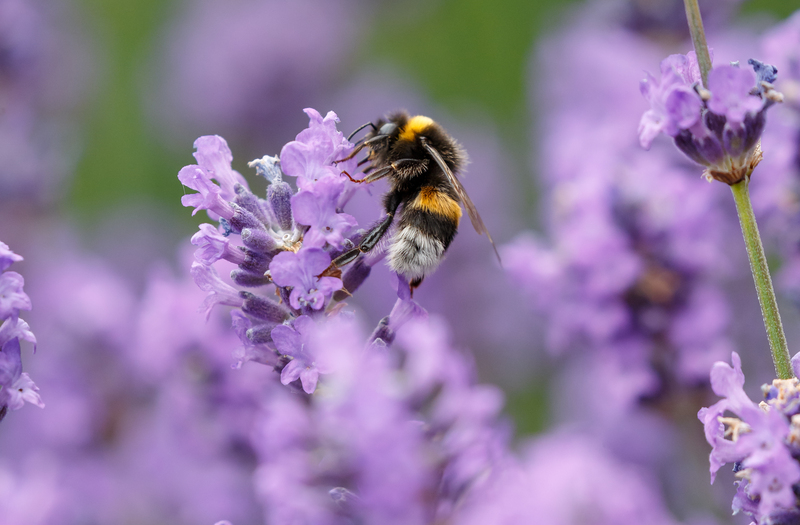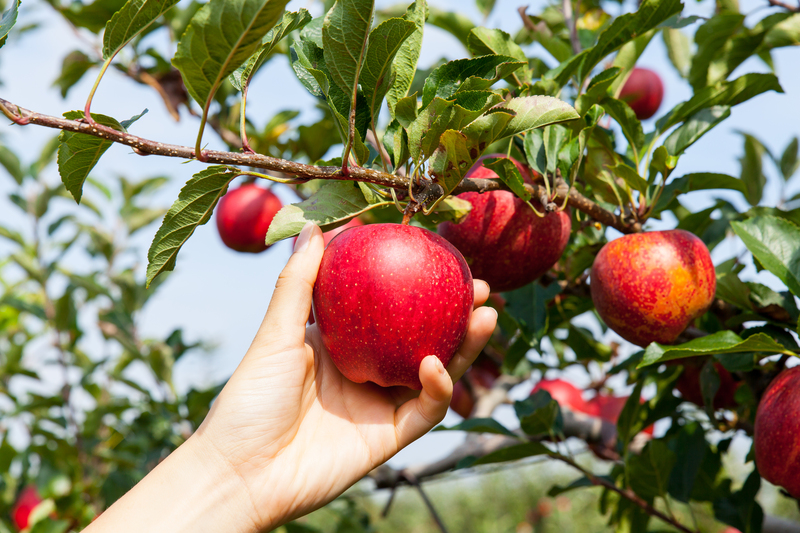From Scraps to Soil: Revitalizing Gardens Naturally
Posted on 12/09/2025
From Scraps to Soil: Revitalizing Gardens Naturally
Are you seeking effective, eco-friendly ways to improve your garden's soil fertility while reducing kitchen waste? Transforming everyday scraps into nutrient-rich soil not only nourishes your plants but also promotes sustainability and minimizes landfill contributions. In this comprehensive guide, discover how to revitalize your garden naturally, exploring practical composting methods, soil improvement techniques, and best practices for reaping the rewards of a healthier, greener garden--all by converting organic scraps into precious soil amendments.
Why Turn Scraps into Soil?
Every year, millions of tons of organic waste end up in landfills, contributing to greenhouse gas emissions and lost opportunities for soil enrichment. By adopting natural scrap-to-soil methods, gardeners and homes can:
- Reduce household waste
- Build fertile garden soil sustainably
- Enhance plant health and yields
- Support a circular, environmentally friendly ecosystem
Embracing the "from kitchen scraps to garden soil" journey means collaborating with nature to create nutrient-dense humus and foster vibrant, productive landscapes.

Understanding the Basics: What Can Become Soil?
Composting, or the process of converting organic scraps into soil, enables nature's recyclers--microbes, fungi, worms, and insects--to break down debris and enrich earth. But what can you actually compost?
Common Kitchen Scraps Suitable for Composting
- Fruit and vegetable peels and trimmings (banana peels, apple cores, carrot skins, etc.)
- Coffee grounds and filters
- Tea bags (ensure they are plastic-free)
- Eggshells (crushed finely)
- Bread, grains, and pasta (in moderation)
- Nut shells (avoid walnut shells)
Garden and Yard Scraps
- Grass clippings
- Twigs and small branches (chopped)
- Dry leaves
- Dead flowers and plants (free of diseases)
- Wood chips and sawdust (from untreated wood)
Always avoid adding dairy products, meat, fats, diseased plants, and non-biodegradable items as they can attract pests or contaminate the compost.
The Science Behind Revitalizing Soil Naturally
Turning scraps into fertile soil is a process that relies on the balanced decomposition of "greens" (nitrogen-rich materials like food waste) and "browns" (carbon-rich materials like leaves and cardboard). Microorganisms and invertebrates work together to break down these components:
- Fungi decompose tougher materials like wood and leaves.
- Bacteria break down simple sugars and proteins.
- Earthworms and insects aerate and mix the compost, expediting decomposition.
The result is humus--a dark, crumbly, and earthy-smelling substance dense with nutrients--an ultimate soil revitalizer for any natural garden.
Methods of Turning Scraps Into Garden Soil
1. Traditional Compost Pile
This classic method, ideal for backyards, involves creating a heap or bin where layers of greens and browns are piled, moistened, and occasionally turned.
- Pros: Simple, low-cost, and scalable
- Cons: Requires space and some physical effort
2. Compost Bins and Tumblers
Bins or tumblers offer a neater, more contained composting solution. Tumblers accelerate decomposition by making turning easier.
- Pros: Pest-resistant, less odor, faster results
- Cons: May be more expensive or smaller in capacity
3. Vermicomposting (Worm Bins)
Red wiggler worms transform kitchen scraps into nutrient-rich castings. Perfect for apartments, small gardens, or year-round indoor composting.
- Pros: Compact, rapid process, high-quality worm castings
- Cons: Sensitive to extreme temperatures and wrong scraps
4. Trench Composting
Scraps are buried directly in garden trenches. They decompose in place, feeding soil microbes and plant roots.
- Pros: No turning, completely out of sight, enriches soil exactly where needed
- Cons: Slower decomposition, not suitable for perennial beds
5. Bokashi Composting
The Bokashi method ferments all types of kitchen waste (including small amounts of meat and dairy) anaerobically in a special bin with inoculated bran. The result is pre-compost, which can then be buried or added to a compost pile.
- Pros: Accepts more types of scraps, rapid in small spaces
- Cons: Requires starter, additional step before soil application
Practical Tips for Composting Success
Maintain the Right Balance
To ensure fast, odor-free decomposition and nutrient-rich soil production:
- Mix roughly 2 or 3 parts brown materials to 1 part green materials
- Chop or shred large scraps for quicker breakdown
- Keep the pile moist--like a wrung-out sponge--but not soggy
- Turn or aerate weekly to maintain oxygen and speed up composting
Avoid Common Pitfalls
- Too wet? Add more dry browns and mix well.
- Too dry? Moisten lightly and add more greens.
- Smelly compost? Usually means too many greens or lack of oxygen--add browns and turn it.
Seasonal and Environmental Considerations
- Composting slows in cold weather but resumes in spring warmth.
- Shade partial-sun location helps regulate temperature and moisture.
- Protect open piles from heavy rain to prevent sogginess.
How Compost Enriches and Revitalizes Soil
Finished compost, often called "black gold", brings tremendous benefits for garden soil and plant vitality:
- Boosts Soil Structure: Compost binds soil particles, improving aeration, water retention, and root growth.
- Provides Balanced Nutrition: Supplies slow-release nitrogen, phosphorus, potassium, calcium, magnesium, and trace minerals.
- Feeds Beneficial Microbial Life: A living soil teems with microbes that help break down nutrients and suppress pathogens.
- Stimulates Earthworms: Earthworms further enhance soil tilth and nutrient cycling.
- Suppresses Diseases & Pests: A healthy, biodiverse soil is more resilient against threats.
- Promotes Eco-Friendly Gardening: Less reliance on chemical fertilizers and healthier, sustainable yards.
Using Compost: Applying Natural Soil Revitalizer
Top Dressing & Mulching
Spread 1-2 inches of finished compost atop garden beds and around plants as mulch. This method feeds soil life and protects roots, reducing watering needs and weed growth.
Soil Amendment
Mix compost into planting holes or throughout beds before seeding or transplanting. For depleted soils, add up to 20-30% by volume and blend thoroughly.
Compost Tea
Soak finished compost in water for several days to create a nutrient-rich tea. Drench garden beds or spray foliage for a natural boost and disease resistance.
Creative Ways to Upcycle Scraps for the Garden
Beyond classic composting, many household scraps can be transformed into natural garden resources in innovative ways:
- Eggshells: Dry and crush for a calcium-rich soil amendment or use as seedling pot protectors.
- Citrus peels: Repel pests as mulch (in moderation) or make biodegradable seedling pots.
- Banana peels: Bury around roses for potassium boost.
- Used coffee grounds: Sprinkle around acid-loving plants such as blueberries and azaleas.
- Vegetable trimmings: Use for liquid plant food by soaking in water for a few days (strain before use).
- Toilet paper rolls and newspaper: Create biodegradable seed starters and weed barriers.
Building a Community: Sharing the Scrap-to-Soil Movement
Natural soil revitalization extends far beyond individual home gardens. Neighborhoods, schools, and communities can coordinate scrap collection and communal composting programs to create bulk soil amendments. Local farms, community gardens, and garden clubs often welcome organic waste donations, while city composting facilities make the process accessible for all.
Getting Involved
- Start or join a community compost effort
- Engage neighbors in scrap-sharing for garden projects
- Support local policies that expand compost collection and soil revitalization resources
Conclusion: From Scraps to Soil, the Natural Way Forward
By turning organic scraps into garden soil and adopting natural soil revitalization practices, every gardener becomes a steward of the Earth. This cycle reduces waste, nourishes plants, fosters biodiversity, and revitalizes minerals crucial for life. Whether you have a backyard sanctuary, a community plot, or a few pots on the balcony, composting kitchen and yard scraps closes the loop and brings health to your garden's soil--naturally.
Take the next step: Start saving your kitchen scraps today, explore the composting method that suits your space, and transform waste into rich, living soil. Your garden--and our planet--will thank you.

Frequently Asked Questions About Revitalizing Gardens Through Scraps
Q: How long does it take to turn scraps into usable soil?
Compost can be ready in as little as 2-3 months under optimal conditions with regular turning and the right balance. However, in colder climates or with less attention, it may take 6-12 months.
Q: Can compost made from scraps attract pests?
Properly managed compost (balanced, covered, and turned) rarely attracts pests. Avoid meat, dairy, and oily foods to deter rodents and flies.
Q: Is compost safe for all types of plants?
Most garden plants benefit from compost. For seedlings, use well-aged compost or blend with soil.
Q: What is the best composting method for small spaces?
Vermicomposting (worm bins) and Bokashi composting are ideal for apartments, patios, or small yards, and yield fast results with minimal space.
Q: How do I know when my compost is ready?
Finished compost is dark, crumbly, and no longer recognizable as scraps. It should have an earth-like smell--never foul or sour.
Resources and Further Reading
Revitalize your garden, support the environment, and embrace the rewards of a sustainable, natural cycle: start your journey from scraps to soil today!

